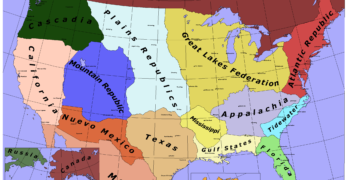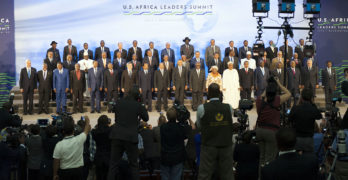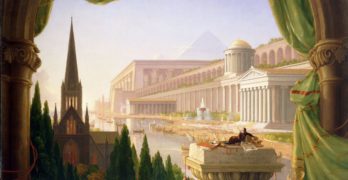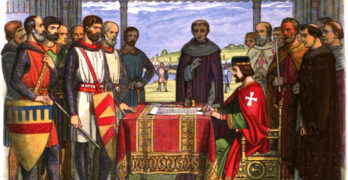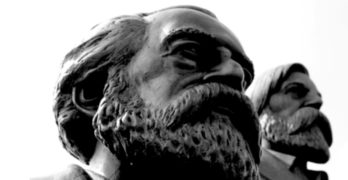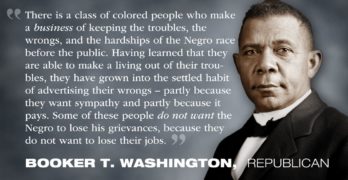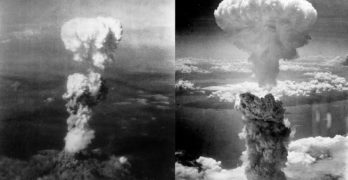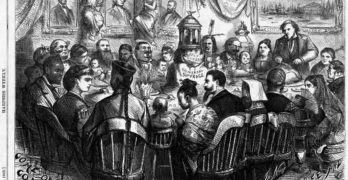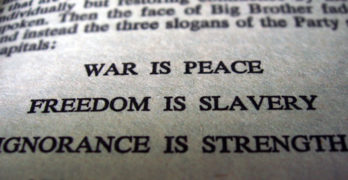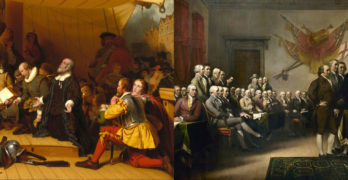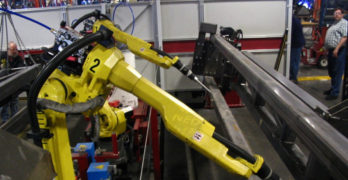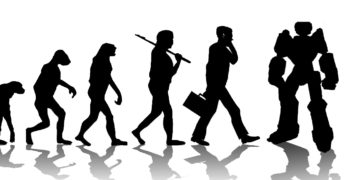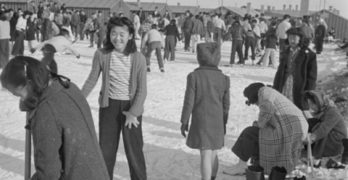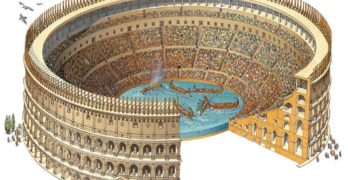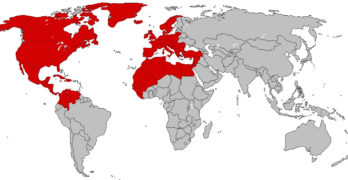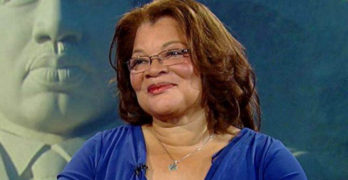 American history shows that in the seventeenth and eighteenth centuries, parents were the primary teachers of their children. Education was not the responsibility of the government, but primarily placed upon the fathers.
American history shows that in the seventeenth and eighteenth centuries, parents were the primary teachers of their children. Education was not the responsibility of the government, but primarily placed upon the fathers.
Moral values, reading, writing, and eventually some sort of vocational training were the main educational tools in the early American home schools. The Bible was the primary textbook in most homes and served as the motivation for acquiring literacy skills and children were exposed to a variety of subjects and given the gift of time, space and opportunity to do more where their interests lied.
Young people were introduced to skilled trades, engineering disciplines, entrepreneurship, invention, and encouraged to work with their hands and their minds so that they would experience the joy of self reliance. We’ve now lost the true meaning of being educated. So the question is:
What is an Education?
To educate means to bring out, to develop the intellectual, moral, and religious faculties of the soul. Charlotte Mason (1842–1923) was a British educator who invested her life in improving the quality of the educational system in England in the late 1800s and early 1900s.
Her educational methods, which are widely used among homeschoolers, are centered on the idea that education is an atmosphere, a discipline, and a life.
By suggesting that education is an atmosphere, Charlotte meant the atmosphere of the surroundings in which the child grows up. A child absorbs a lot from his or her home environment, and that atmosphere makes up one-third of a child’s education. She knew that the child breathes the atmosphere emanating from their parents, which eventually rules their own lives.
By discipline Charlotte meant the discipline of good habits and especially habits of character in a child’s life, which make up another third of his or her education.
She compared good habits to railroad tracks that parents lay down and upon which the child may travel with ease into their adult life. It rests with the parent to consider well the tracks over which the child should travel with profit and pleasure.
Lastly, by a describing it as life, she believed that we should give children living thoughts and ideas, instead of dry, factual concepts. For example, her students used living books rather than dry textbooks.
She preferred books written with a passion for the topic, books that were alive, engaging, and a beautiful literary style while communicating great ideas rather than mere facts.
She believed the size of the book not as important as the content and style. She emphasized the priority Bible lessons should have in our curriculum: “Their Bible lessons should help them realize in early days that the knowledge of God is the principal knowledge, and, therefore, that their Bible lessons are their chief lessons.
She also emphasized treating each child uniquely as a person—a human being not a human doing or as a container into which information is dumped.
Charlotte believed that all children should receive a broad education, which she compared to spreading a feast of great ideas before them.
Susan Schaeffer Macaulay, another mentor of the modern homeschool movement, expressed a strong disapproval of the modern approach to education, noting:
How colorfully and scientifically our generation talks down to the little child! What insipid, stupid, dull stories are trotted out! And we don’t stop there. We don’t respect the children’s thinking or let them come to any conclusions themselves!
We ply them with endless questions, the ones we’ve thought up, instead of being silent and letting the child’s questions bubble up with interest. We tire them with workbooks that would squeeze out the last drop of anybody’s patience.
We remove interesting books and squander time on “reading skill testing,” using idiotic isolated paragraphs which no one would dream of taking home to read.
Dr. Ruth Beechick, a former teacher and professor of education, in her book, You Can Teach Your Child Successfully, pointed out that presenting our students with information that is “predigested, pre-thought, pre-analyzed, and pre-synthesized…deprives children of the joy of original thought.”
And Neil Postman asserted in his book, The End of Education that “knowledge is often presented as the accumulation of facts, dates, times, places—trivializing the pursuit of knowledge to the extent that “there is no sense of the frailty or ambiguity of human judgment, no hint of the possibilities of error. Knowledge is presented as a commodity to be acquired, never as a human struggle to understand, to overcome falsity, to stumble toward truth.”
Macaulay and Charlotte both believed “Boys and girls must have time to invent episodes, carry on adventures, live heroic lives, lay sieges and carry forts, even if the fortress be an old armchair; and in these affairs the elders must neither meddle nor make.” As John Ratzenberger rightly said, “We built this nation guided by our imaginations and the skills we learned from our elders.”In his testimony to Congress House Committee on small business, he said,
Manufacturing is the Backbone of Western Civilization
This great country of ours, this land we call the United States of America was founded and nurtured on 2 basic guiding principles: Freedom and the Ability to use that freedom to build the finest civilization yet seen on earth.
We built this nation guided by our imaginations and the skills we learned from our elders…. There are close to a million jobs available right now in small businesses around the country that rely on people with mechanical common sense skills that we’ve stopped offering in our public schools three generations ago.
The fate of Western Civilization rests entirely on our ability to make things. The world would get along just fine without actors, reality stars, musicians and sports celebrities……Think, however, what would happen if all the skilled trades people from carpenters and plumbers to farmers and truck drivers decided not to show up for work tomorrow. We, the entire nation, would instantly grind to a halt causing problems that would take generations to overcome.
So why then have we stopped teaching our children the joys of crafting something out of nothing? About fifteen years ago while visiting a number of factories and filming the different ways companies make things for my TV show “John Ratzenberger’s Made in America”, I realized that there were hardly any workers under the age of forty in any of the facilities.
After talking with dozens of CEOs and plant foremen in every state, I was made aware of the fact that nationwide, the manual arts, that is: wood shop, metal shop, auto repair shop and even home economics were taken out of the middle and high school curriculums about 35 years ago.
Not only did that result in a dropout rate back then of 30 percent instantly but it left us with a skilled essential workforce whose average age today is 58 years old.
The most repeated complaint today from potential employers is that it’s impossible to train someone for any of the jobs available when they graduate from high schools everywhere without the ability to even read inches and fractions from a simple ruler.
The big worrisome question then is this: How do we reinstate the necessary programs in our schools to give our children a familiarity of the tools that built and maintain our civilization and way of life?
If the average age of the people that keep our nation and the nation’s infrastructure working is 58 years old, then how long do we have before it all stops?”
I also submit that we do away with the term “blue collar worker” and replace it with “essential worker,” because that’s exactly what they are… We had better get busy introducing our youngsters to the vital art of using tools and the joy of self reliance.
Ratzenberger’s sombre view of American education is echoed by Mike Rowe who also gave his Testimony before the U.S. Senate Committee on Commerce, Science and Transportation, about the failures of the American school system:
In high schools, the vocational arts have all but vanished. We’ve elevated the importance of “higher education” to such a lofty perch that all other forms of knowledge are now labelled “alternative.”
Millions of parents and kids see apprenticeships and on-the-job-training opportunities as “vocational consolation prizes,” best suited for those not cut out for a four-year degree…..
In a hundred different ways, we have slowly marginalized an entire category of critical professions, reshaping our expectations of a “good job” into something that no longer looks like work.
Greek Work Philosophy
This negative attitude towards manual labour came from Greek philosophy, and it is no wonder that the apostle Paul‘s message to the Greeks was plagued with numerous problems.
For instance, Acts 17:21-30 describes a sermon preached by Paul on Mars Hill auditorium, the famous place of discussion of the judges and learned men of Athens.
Athens was the principle city of that part of Greece, which was at that time a commonwealth of its own. It was one of the most noted places in the whole world for learning, philosophy, and human wisdom.
It continued for so many years until the Romans conquered Greece, when its reputation began to diminish. Rome borrowed the learning of science and the arts. However, at the time of Christ and the apostles, it was still a place where the most wise and learned men in the world gathered for debate.
When Paul started preaching, he was called a babbler, for preaching Christ crucified which was foolishness to the Greeks (1 Corinthians 1:23).
Paul had all the credentials to debate with these philosophers; he was an educated rabbi taught by the finest scholar of his day, Gamaliel. He probably excited their curiosity because they loved discussing new intellectual ideas.
In spite of his great learning, Paul was taught a trade, as every good Jewish boy was. His trade was manufacturing tents in addition to being an evangelist, preacher, and church planter.
In 2 Thessalonians 3, Paul says when he did this work of tent-making; he was serving as a model of the disciplined lifestyle that should characterize Christians. In fact, he strongly commands certain sluggards in the church “to work in quietness with their hands, and earn their own food and other necessities.” (2 Thessalonians 3:12)
Again in his letter to Titus, he again reiterates this admonition, “And let our own people really learn to apply themselves to good deeds (to honest labour and honourable employment), so that they may be able to meet necessary demands whenever the occasion may require and not be living idle and uncultivated and unfruitful lives.” (Titus 3:12 AMP)
However, in Greek society, if you worked with your hands you were lower down the social scale than those who worked with their heads and were ‘pen-pushers’-an attitude that, sadly, the West has inherited.
Since Western civilization is based on Greek and Roman thinking, it also explains much about the education system today. But in the Bible jobs such as tent-making and fishing were well respected. So the Bible attaches dignity to manual labour. After all, the Lord Jesus Himself had worked as a carpenter.
In his book, The Closing of the American Mind, Alan Bloom decries the deterioration of our schools, particularly as it applies to the solid content of education. In the U.K morals have faded and are now being replaced by a feeble attempt at creating “British Values.”
Another writer by the names of John Chancellor had this to say about the education system in America:
If the United States runs out of scientists and engineers by the turn of the century, who will replace them? Today’s thirteen year-olds? Hardly. The Department of Education in 1989 helped fund a study of the mathematics and science skills of thirteen year-olds in several countries. The American children came in dead last, with lower scores than the Spanish, British, Irish, Canadian and South Korean children.
South Korean thirteen-year olds were first. The comparison was devastating. South Korea is a developing country, nearly destroyed by war in the 1950’s with a population that was mainly poor farmers a few decades ago.
The United States is an economic giant, but suffering from a softening of the brain. The Council on Competitiveness estimates that sixty thousand mathematics and science teachers in our high schools are not fully qualified to do their jobs.
Again in 1989, Chancellor reports,
The Secretary of Education, Lauro F. Cavazos, reported that since 1985, American high school students had flat or declining scores on college entrance examinations and an unchanged dropout rate. One out of every four high school students does not finish school—close to one million young people.
Another fourth-another million—who are graduated are functionally illiterate when they get their diplomas. Half the eighteen-year-olds in this country today have failed to master basic language, mathematics, and analytical skills. A million dropouts here, a million functional illiterates there, every year.
Can these attitudes voiced by writers almost two decades ago be thought of as isolated prejudices by those who don’t want to accept the facts?
Ann Herzer reports that “the teachers who dare to object are accused of being negative, non-cooperative, not innovative, and eventually fired or driven out of the programmed system.” Leading her to conclude that:
Unless the objectives of modern education change, they may be concisely and accurately described as the ultimate destruction of the human individual as a person; the eradication of all the traditions, ideals, and moral concepts learned from home and church; the destruction of the family as a constructive unit in society; and a complete transformation of the individual from a self-reliant-independent, and one with individual initiative, to just another number in the master record book.
The individual will have been bred, reared, and taught by every deceitful device possible to deny and reject responsibility for himself, and to transfer that responsibility to the group, that is, the State. This is the state of modern education under the deceitful, Utopian, One-World plan known by several names, but today titled “Common-Core.”
And what is Common-Core? The Lord willing, in our next post we shall talk about the history of the public school system and how this modern concept called Common-Core has been introduced into the education system.


